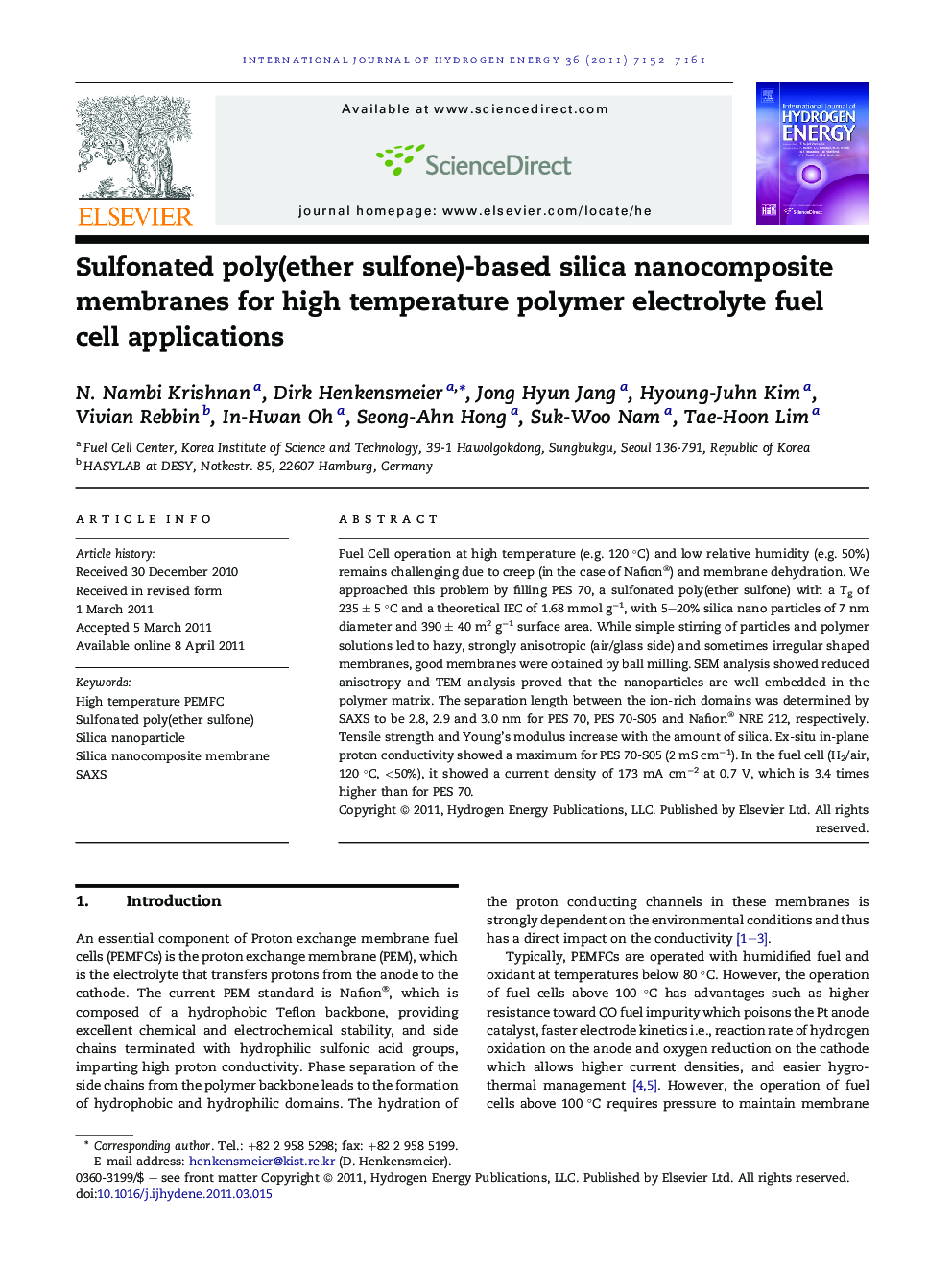| Article ID | Journal | Published Year | Pages | File Type |
|---|---|---|---|---|
| 1272104 | International Journal of Hydrogen Energy | 2011 | 10 Pages |
Fuel Cell operation at high temperature (e.g. 120 °C) and low relative humidity (e.g. 50%) remains challenging due to creep (in the case of Nafion®) and membrane dehydration. We approached this problem by filling PES 70, a sulfonated poly(ether sulfone) with a Tg of 235 ± 5 °C and a theoretical IEC of 1.68 mmol g−1, with 5–20% silica nano particles of 7 nm diameter and 390 ± 40 m2 g−1 surface area. While simple stirring of particles and polymer solutions led to hazy, strongly anisotropic (air/glass side) and sometimes irregular shaped membranes, good membranes were obtained by ball milling. SEM analysis showed reduced anisotropy and TEM analysis proved that the nanoparticles are well embedded in the polymer matrix. The separation length between the ion-rich domains was determined by SAXS to be 2.8, 2.9 and 3.0 nm for PES 70, PES 70-S05 and Nafion® NRE 212, respectively. Tensile strength and Young’s modulus increase with the amount of silica. Ex-situ in-plane proton conductivity showed a maximum for PES 70-S05 (2 mS cm−1). In the fuel cell (H2/air, 120 °C, <50%), it showed a current density of 173 mA cm−2 at 0.7 V, which is 3.4 times higher than for PES 70.
